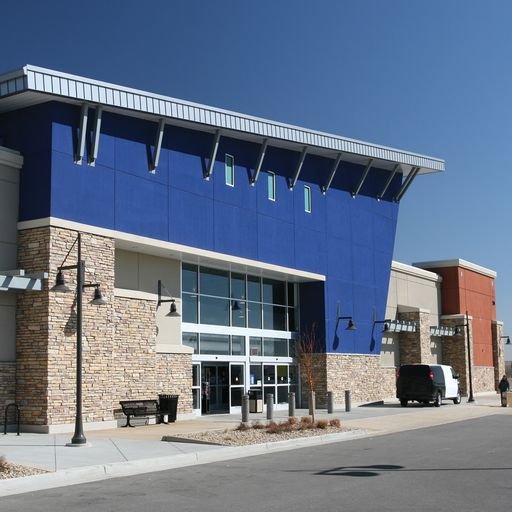
Coldwell Banker Commercial
ABOUT
The Coldwell Banker Commercial® brand(CBC) is a worldwide leader in the commercial real estate industry, and is part of the oldest and most respected national real estate brand in the country, Coldwell Banker Real Estate. Coldwell Banker Commercial is an Anywhere (NYSE: HOUS) brand, a global leader in real estate franchising and provider of real estate brokerage, relocation and settlement services.
Recent articles
-
 News
NewsColdwell Banker Commercial Awarded Exclusive Leasing and Property Management Rights for Kukui Mall in Kihei
Coldwell Banker Commercial, a leader in the Hawaii commercial real estate industry, is pleased to announce that it has been retained to exclusively provide leasing and property management services for Kukui Mall, located at 1819 S. Kihei Road on Maui.
-
 Retail
Retail2023’s Top Performing Retail Hubs: Consumers Create New Paths to Retailers
The retail industry has experienced intense highs and lows in recent years. In-person store visits experienced a substantial increase in the latter half of 2023, largely attributed to the phenomenon known as "revenge shopping." This concept captures the enthusiasm people have for spending money on shopping, driven by the sense of deprivation they experienced during the pandemic. However, this surge was brief, as it was followed by the Omicron wave in early 2022, coupled with record-high gas prices and subsequent inflation, which hindered the emerging recovery. Nevertheless, there is a robust appetite for in-person shopping among consumers today. It's worth noting that foot traffic data suggests that the performance of brick-and-mortar retail in 2023 varies significantly from one region to another. According to research analytics by Placer.ai, New York, NY; San Jose, CA; New Haven, Bridgeport; Hartford, CT; and Washington D.C. are leading the pack as thriving retail hubs. As Placer.ai highlights in their study, the New York-Newark-Jersey City core-based statistical area witnessed a 1.3% increase in store visits at the beginning of the year. One of the main factors contributing to this trend was the significant return of office workers to Manhattan. In January, over 86% of office workers returned to their workplaces, a stark contrast to the 38% in 2022. February saw nearly 32% of employees returning to work, almost double the number from the same month in the previous year. This increase in office workers also led to a surge in foot traffic in key retail areas. Store visits in May to some of New York’s prime retail corridors like Times Square & 42nd Street, North 5th Ave., and the Flatiron District saw impressive rises of 12.8%, 10.2%, and 13.8%, respectively. These increases were notably higher compared to the nationwide rise of just 1.7%.Interestingly, New Yorkers who permanently left their homes and offices during the pandemic contributed to a retail resurgence north of the city, particularly in Connecticut. Thousands of them relocated to Connecticut, resulting in significant traffic increases in New Haven, Hartford, and Bridgeport. Over the past three years, these Connecticut CBSAs have experienced a steady increase in population, with many newcomers coming from New York City neighborhoods with higher median home values. Placer.ai analyzed Zillow housing data and found a pattern of high-income homeowners moving to more affordable areas in Connecticut. This allowed them to sell their expensive properties and purchase more affordable ones in Connecticut, leaving them with high disposable incomes to spend on home improvement projects and shopping trips. In the first half of the year, Silicon Valley emerged as a shopping hotspot in California. The San Jose-Sunnyvale-Santa Clara CBSA saw shopping center traffic gains of up to 5% from February to April. In contrast, all other major California CBSAs experienced declines in traffic during the same period. The affluence of residents in Silicon Valley played a significant role in drawing crowds. Nearly 45% of trade areas in the San Jose CBSA had median household incomes exceeding $200,000 per year, while only about 25% of shopping center trade areas in California maintained this income level.Georgetown, a popular neighborhood in Washington, D.C., stood out for its affluent and youthful population. This made it a prime location for digitally native brands looking to establish their presence in physical retail. In the first half of the year, several youth-oriented brands experienced significant increases in foot traffic compared to 2022. Anthropologie recorded a 45% increase, while Everlane and Warby Parker saw rises of more than 25%.Thriving retail hubs often serve as indicators of economic vitality and consumer demand, providing valuable insights into market trends and potential investment hotspots. Moreover, understanding the factors driving success in these hubs, such as population growth, income levels, or shifts in consumer behavior, can help investors position themselves strategically. Furthermore, staying connected to thriving retail hubs enables investors to diversify their portfolios and mitigate risks associated with economic downturns or localized challenges.
-
 Office
OfficeCoworking Space Gaining Popularity in Commercial Real Estate
Given the rapid increase in office vacancies and the continued popularity of remote or hybrid work models, post-pandemic, commercial real estate investors are now turning their attention to coworking spaces as the demand for them rises. Coworking and shared spaces have become crucial for various professional groups, including early-stage small businesses, freelancers, and college students. The appeal of coworking is expanding, from entrepreneurs managing solo operations to large corporations investing in shared workspaces, and even college students are emerging as new users in coworking spaces near their campuses.
-
 Retail
RetailC-Store Trends & The Brands Leading the Way
Many recall convenience stores as small retail establishments attached to a gas station, where one might grab a drink or a pack of gum. However, as indicated in Placer.ai's white paper titled "C-Store Trends & the Brands Leading the Way," contemporary convenience stores, or "C-stores," have undergone a substantial transformation. While some convenience stores still derive their revenue from gas and automotive services, others have repositioned themselves as destinations where patrons can enjoy specialty coffee, grab a quick dinner, or conveniently acquire a selection of grocery items on their way home from work, as highlighted in the white paper. Or in the case of some like Buc-ee's, convenience has been elevated into a whole new super-sized extravaganza attraction.The Rise of the C-StoreIn recent years, C-stores have demonstrated remarkable success in the retail sector, outpacing several related categories, including traditional grocery stores. Furthermore, despite the challenge of higher gas prices, the white paper highlights a notable increase in foot traffic at convenience stores. This surge in visitation can be attributed to two primary factors: inflation and improved food offerings. With inflation increasing prices, individuals increasingly seek affordable indulgences and cost-effective alternatives. This shift in consumer behavior has led many people to favor convenience stores over extensive trips to larger grocery stores. Additionally, the enhanced food offerings in these establishments, including options like fresh coffee, baked goods, and fast food, have contributed significantly to their growing popularity.C-Store Brands Leading the WayThe C-store industry exhibits significant regional variations. Despite being a national brand, 7-Eleven holds a dominant presence on the West Coast. Maverick – Adventure's First Stop enjoys renown in Wyoming and Utah, while Cumberland Farms stands as the primary C-store choice in New England. In Texas, Buc-ee's holds exceptional popularity, and for residents of Florida, Maryland, Pennsylvania, Virginia, and New Jersey, Wawa is the preferred and go-to convenience store.Staying up to speed with C-store trends is of paramount importance for investors in today's dynamic market landscape. The evolving nature of C-stores, as highlighted by the transformation from simple gas station add-ons to multifaceted retail establishments, presents compelling reasons for investors to keep a keen eye on this sector. The remarkable growth and adaptability of C-stores underscore their potential as rewarding investment opportunities. As these stores diversify their offerings, investors have the chance to tap into a market that not only caters to traditional automotive needs but also serves as a destination for food, beverages, and everyday essentials. Recognizing the trends in convenience store evolution can help investors identify the brands and chains that are thriving in this competitive environment.
-
 News
NewsColdwell Banker Commercial Atlantic Brokers Multiple Leases For Redeveloped Montague Corners Shopping Center
Coldwell Banker Commercial Atlantic has been instrumental in the re-tenanting and remerchandising for the redeveloped of Montague Corners, formerly Oak Ridge Plaza, at 5060 Dorchester Rd. in North Charleston.
-
 News
NewsColdwell Banker Commercial River Valley Manages Sale Of $10M Office Building In Onalaska To Kwik Trip Convenience Store Company
Coldwell Banker Commercial River Valley recently completed the $10 million sale of a three-story, 66,000-square-foot office building located off Interstate 90 in the La Crosse/Onalaska corridor of Wisconsin.
-
 Retail
RetailTHE TREND REPORT
Retail Renaissance: Adapting Malls for Success. The modern retail landscape is undergoing significant transformations, spurred by evolving consumer behaviors, technological advancements, and economic shifts. Looking ahead to 2023 and beyond, it is crucial to understand the four key themes that are shaping the future of malls and their relevance.
-
 News
NewsCOLDWELL BANKER COMMERCIAL ATLANTIC BROKERS LEASE FOR NAIL SALON/SOCIAL MEDIA INFLUENCER STUDIO
NORTH CHARLESTON, S.C. (Sept. 27, 2023) – Coldwell Banker Commercial Atlantic recently brokered the lease for a new retail space in North Charleston that will operate as a nail salon and social media influencer studio. The 11,985 square-foot space is located at 5301 Indigo Fields Blvd., Suite 101-106. Coldwell Banker Commercial Atlantic brokers represented both sides of the transaction. Jing (Julia) Donovan represented the tenant, Indigo Studio Charleston LLC, which operates Oh La La Salon. Oh La La Salon is a salon studio with hair, makeup, and nail art spaces, including an influencer photo studio for photoshoots and short-form video content. Brent Case and Hannah Kamba represented the lessor, HW-Indigo LLC. The salon is in a newly developed shopping center, developed and managed by Hardy World, LLC. The shopping center fronts Dorchester Road, next to the intersection with Ashley Phosphate, and offers easy access to I-26 and I-526. The traffic count is above 40,400 vehicles per day. The shopping center has excellent visibility and access from Dorchester Road with a multitude of uses available ranging from retail, office, medical and flex. There is an opportunity for a large restaurant with a patio.About Coldwell Banker Commercial AffiliatesColdwell Banker Commercial Atlantic, an affiliate of Coldwell Banker Commercial®, provides commercial real estate solutions serving the needs of owners and occupiers in the leasing, acquisition, and disposition of all property types. With a collaborative network of independently owned and operated affiliates, the Coldwell Banker Commercial organization comprises almost 200 companies and more than 3,000 professionals throughout the U.S. and internationally. For additional information, visit www.cbcworldwide.com. Media Contact: Kevin Guhl kevin.guhl@cbhomeoffice.com973-407-5916
-
 Retail
RetailRetail Shops Shine as a Prominent Player in Commercial Real Estate
Retailers in the United States are defying historic lows in retail space availability by planning to launch 1,000 new stores this year, underscoring the sector's resilience amid commercial real estate challenges. Despite factors like inflation, elevated interest rates, and the closure of businesses such as Bed Bath & Beyond and Christmas Tree Shops, landlords are reporting unwavering demand for retail spaces, highlighted by The Wall Street Journal. This resilience can be attributed to the reduced retail construction since the 2008-09 financial crisis, allowing the oversaturated sector to absorb its existing real estate. Moreover, retailers are using online sales data and analytics to pinpoint ideal locations for successful stores. Contrary to predictions of online retail dominance, digital-native companies are now establishing physical storefronts after reaching their online customer acquisition limits. Shoppers are returning to stores and restaurants as pandemic restrictions ease, alleviating earlier concerns. Additionally, Commerce Department data from earlier this summer reveals that retail sales increased by a seasonally adjusted 0.7% in July compared to the prior month. American spending has risen for four consecutive months and seems to be outpacing inflation.This retail revival stands in stark contrast to the office market, which is grappling with a 30-year high in office vacancy rates of 18.2%, primarily due to the rise of hybrid work schedules. A whitepaper by Placer.ai highlights the success of Walmart, Target, and Costco amid economic challenges such as inflation and high gas prices. Despite the evolving retail landscape, these retailers serve as prime examples of how challenges can transform into opportunities. Placer.ai's Q2 2023 data suggests that shifting consumer trends are favoring superstores.In fact, both Costco and Target outperformed the broader retail sector in year-over-year (YoY) performance, with visit growth rates of 1.2% and 3.1% in the first half of 2023, compared to the overall retail sector's 0.3% decline. Conversely, Walmart seemed to be more affected by inflation, possibly due to its visitors having a lower median household income compared to Costco and Target shoppers, experiencing a 0.9% decrease in foot traffic compared to H1 2022. However, recent weekly visit data indicates a potential Walmart rebound. Between June 19th and July 24th, the chain recorded year-over-year weekly visit growth, suggesting a positive trajectory and hinting at year-over-year growth in the second half of the year.For commercial real estate investors, staying attuned to retail trends is of paramount importance. The ability to anticipate and respond to these trends can make the difference between a successful investment and a poor decision. Understanding which retailers are thriving and why, as well as grasping the nuances of changing consumer behavior, can inform strategic decisions regarding property acquisitions, leases, and developments. Incorporating these insights into investment strategies can help commercial real estate investors identify prime locations, optimize property portfolios, and ultimately maximize returns on their investments.
-
 Multifamily
MultifamilyChallenges in the Affordable Housing Space: What to Know
The U.S. is facing a potential loss of nearly 200,000 affordable housing units in the next five years as government protections expire for hundreds of rental properties, allowing landlords to set their own rents, highlighted by The Wall Street Journal. The main program used by the federal government to encourage developers to build affordable housing is a 30-year tax credit. However, specific agreements that assisted low-income renters are set to end, giving landlords the option to charge market rates for their units instead of continuing with the government program. Due to a period of high rent growth, many landlords are expected to raise rents significantly. Between early 2021 and the summer of 2022, asking rents for market-rate units increased by 25%, according to Apartment List, a rentals website. By 2027, up to 188,000 low-cost rental apartments funded by the government tax credit could convert to market rate, as reported by Moody's Analytics. Certain cities, such as Dallas, Chicago, and Houston, are at risk of losing a significant portion of their affordable housing. During the pandemic, a considerable number of affordable housing units vanished, with a decline of 400,000 apartments and rental homes for families in poverty between 2019 and 2021, according to the National Low Income Housing Coalition, which analyzed U.S. census data. Some of this loss was attributed to the expiration of tax credits, as mentioned by Moody's Analytics.Without longer affordability agreements or new subsidies, approximately 100,000 units of tax-credit housing could expire annually by 2033, according to Peter Lawrence, director of public policy and government. Rent increases following expiration can be substantial, as affordable housing rents are typically 38% below market rates on average, but after expiration, they rise to about the same level as market-rate properties of comparable quality and location, according to a study by Freddie Mac.This situation has left some long-term renters in difficult situations. The Wall Street Journal article shares the story of an 85-year-old renter in California who lives on a monthly income of $1,000 and has experienced minimal rent increases for nearly three decades. However, in 2021, the landlord opted out of the federal tax credit program, causing the rent to more than double, going up to as much as $1,300. Landlords have been major supporters of the tax credit program, and many have built large businesses by operating affordable housing. But without new subsidies or incentives, building owners will likely take advantage of the recent hot market and raise rents to meet the rising costs of maintenance, insurance, and property taxes. The solutions to this looming challenge will require cities and government agencies to work with landlords and developers to encourage investment into affordable housing projects, while simultaneously creating the incentives to do so. It is a complex situation that won’t easily be solved but without collaboration to address the need, it is clear that fewer options will be available. That doesn’t bode well for the future of many who are in desperate need and could end up without a safe and secure place to live.